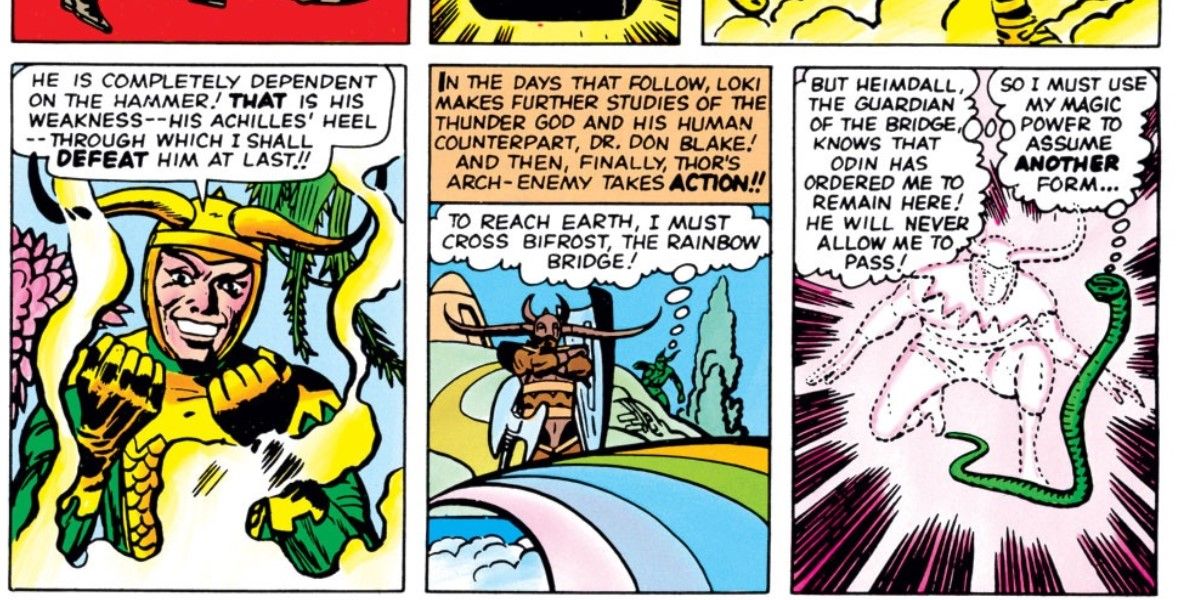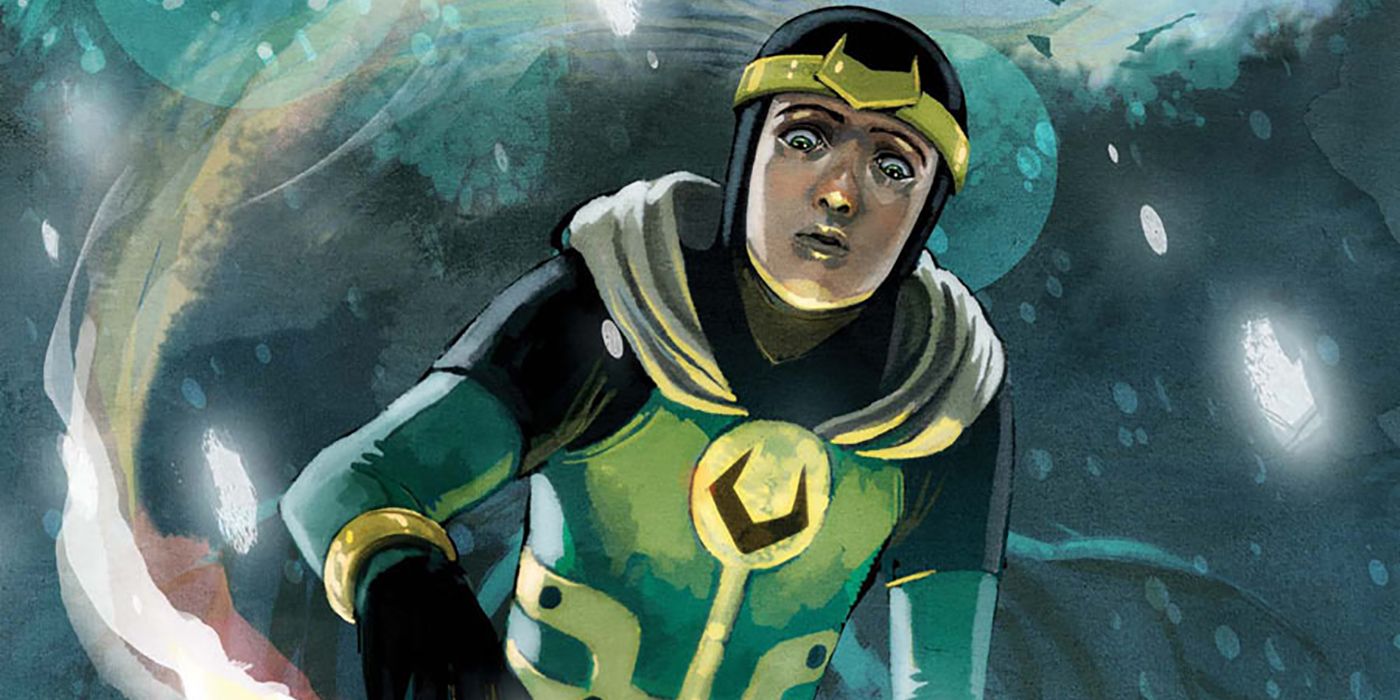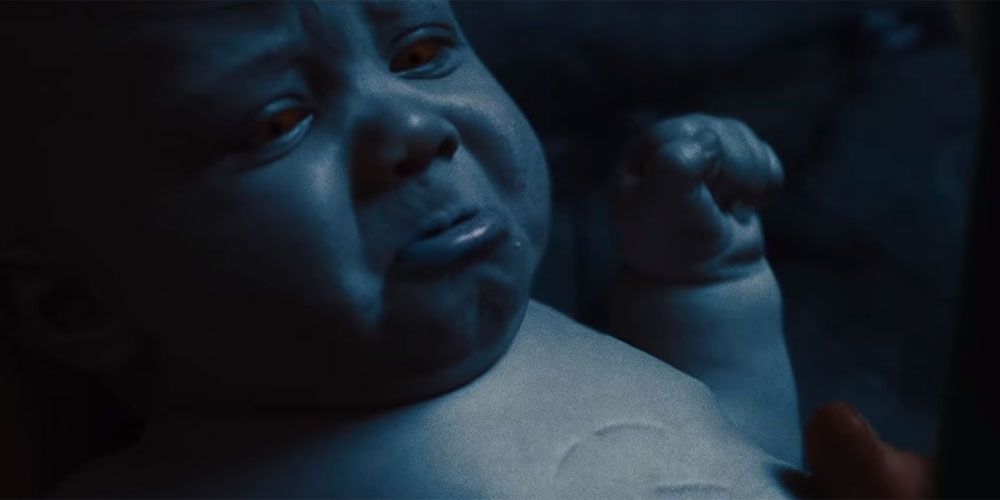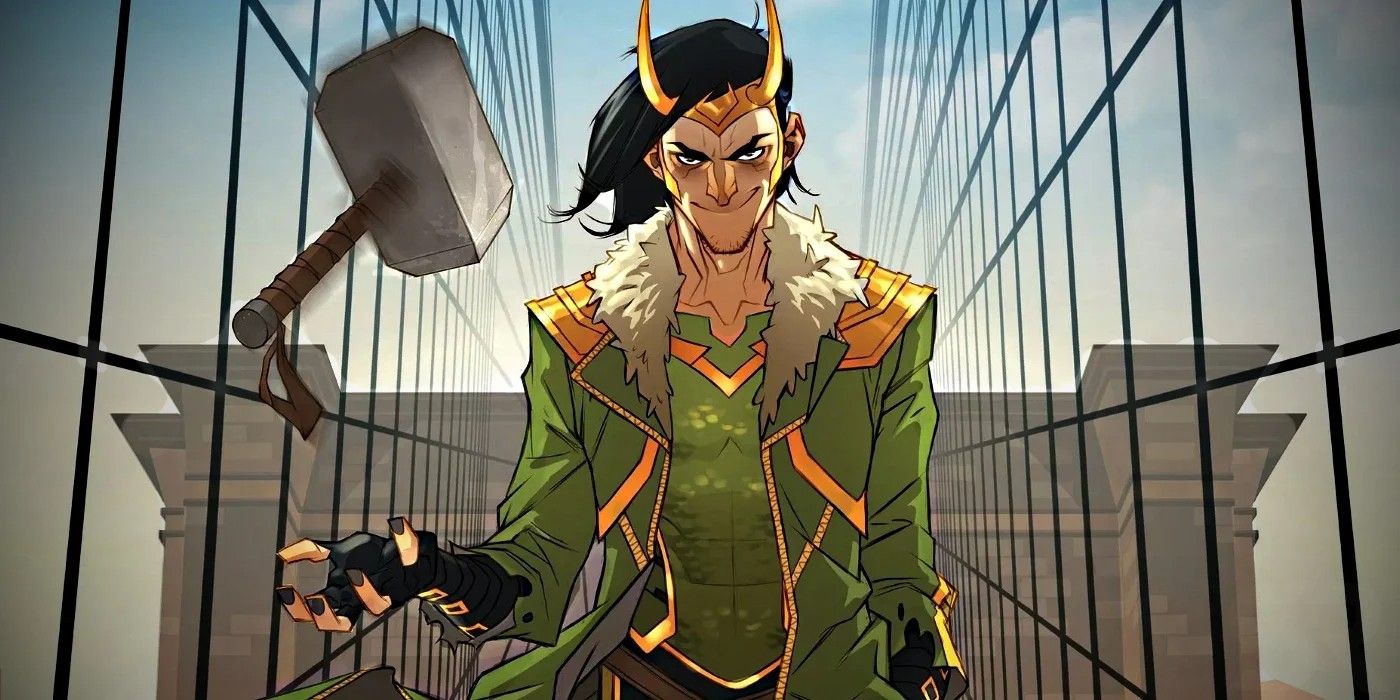Nothing is ever straightforward when it comes to Loki, not even the mechanics of his own body. The God of Mischief has pulled many tricks over the years and you can never really be sure just what Loki's plans truly are. Since Loki made his modern Marvel Universe debut in Stan Lee, Jack Kirby and Larry Lieber's Journey Into Mystery #85, the God of Mischief has used his cunning and the many abilities that his powers give him to spread his unique brand of chaos and life-threatening mischief around the Marvel Universe.
Whether Loki presents as a woman or a child or someone else entirely, a pigeon, it may help out to know the most important (and weirdest) facts about Thor's devious brother and his Asgardian anatomy.
Shifting Shapes
In keeping with his trickster ways, Loki often employs disguises or shapeshifts in order to take on a new identity. As one of the first abilities he demonstrated in comics, he's racked up quite the number of creatures he's transformed into, such as snakes, pigeons, bees, and even a dragon. The ability proves useful for disguise, reconnaissance, or for amping up the stakes to create a more powerful form in a fight. He almost always shifts out of these shapes, but some prove more permanent than others.
Lady Loki
One of the more permanent transformations came when Loki took on a female body. Known as Lady Loki, this iteration of Loki happened following Ragnarok when the gods of Asgard were reincarnated into new forms in J. Michael Straczynski and Olivier Coipel's Thor #5 in 2008.
The body Loki wore was originally meant for Sif, but her soul was trapped in a dying patient of Jane Foster's form. Instead, Loki took the body for a moderately long period of time. Since then, Loki has returned to this body on occasion.
Kid Loki
Lady Loki was not the only shape Loki took on semi-permanently. Following his sacrifice in the Siege crossover and in keeping with the cyclical nature of the gods, Loki was reborn in the childlike form of Kid Loki in Matt Fraction and Pasqual Ferry's Thor #617 in 2011. Although it was made emphatically clear that this was a new version of the character and that the old Loki truly died, a fragment of the old Loki's soul did survive as a result of machinations with the goddess of death Hela. Kid Loki proved a lot more heroic than his adult predecessor, but there's a persistent mischievous streak that will forever define the character.
Half Frost Giant
One of the most peculiar aspects of Loki's background is that he is not technically an Asgardian by heritage, and was only adopted into Odin's family at an early age. Born the son of Queen Farbauti and King Lauffey, the leader of the giants of Jottunheim, Loki was outcast for his comparatively diminutive size. In the MCU his appearance goes magically concealed, although his true nature occasionally seeps through. In his Frost Giant form, Loki's skin takes on a bluish tint while his eyes burn a bloody red, like the rest of his icy brethren.
Asgardian Anatomy
Despite his Frost Giant ancestry, Loki peculiarly shares his biology with that of most Asgardians. This means Loki has advanced strength and durability related to highly dense muscle tissue and bone structure. This allows him to lift several tons, rip through thick steel doors, and survive strikes from Thor that would otherwise prove fatal. It also grants him immunity to most poisons, and Dr. Doom once laced Lady Loki's meal with deadly toxins in order to confirm that he was truly dining with the godly trickster. Loki ate the rest of the meal delighted, and it's clear that it takes a whole lot more than mortal means to put down such a powerful force.






